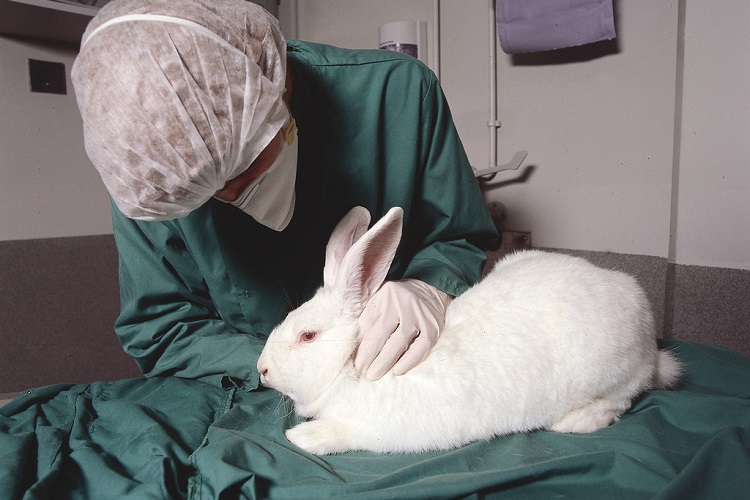There are people who are being paid to be cruel to animals. That’s what rabbit testing is… animal cruelty. Your shampoo, lipstick, or deodorant could have been injected into the eyes of a rabbit even when there are available alternatives to discover product toxicity.
We have the power to spread the word about what’s happening, even though it’s a controversial subject. And fortunately, as consumers, we can choose which companies to buy from. So let’s start from the beginning.
Rabbits are used every single day by proponents of animal testing.
“…more than 161,000 of them are abused in U.S. laboratories every year.” – People for the Ethical Treatment of Animals
It took concerned citizens to stop the atrocities administered to mental health patients in our country. It takes concerned citizens to vote for leaders who support doing the right thing.
It’s time to be the concerned citizen who helps stop rabbit testing once and for all.
Overview of Rabbit Testing
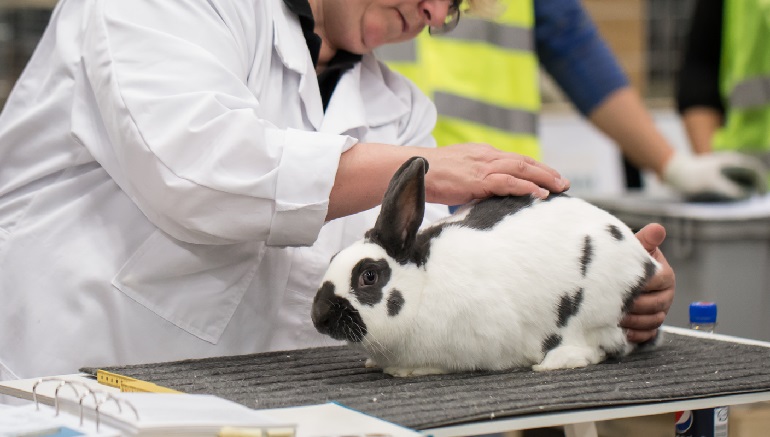
It all started in a Berlin hospital. Two gynecologists discovered that mice could be used to test for HCG, the pregnancy hormone, and so began the saga.
In the mid-1900s, the procedural details had made their way to America, and Dr. Maurice Friedman replaced the mice with rabbits to test for HCG. He oversaw the mass slaughter of these precious animals.
The Friedman test, as some called it, became known as “the rabbit test,” and I’d love to say that Americans were ignorant of what the process entailed, but that wouldn’t be true.
When the phrase “the rabbit died” wormed its way into society to describe a pregnant woman, you could label those who said it as being ignorant of the facts or just plain stupid.
When the first OTC pregnancy test became widely available in the 70s, the killing and dissection of rabbits for this specific reason stopped…Supposedly. However, they continued to be used and tested on in America and worldwide to discover toxicity levels in cosmetics, drugs, and household products. To this very day!
For whatever misguided reasons, many don’t see rabbits as animals that have feelings when quite the opposite is true. Scientists have proven they are sentient beings which means they can feel emotions.
One of their innate needs is their desire for companionship. Rabbits are highly sociable creatures in the wild, and those in captivity are no different.
For them to be trapped in individual laboratory cages, 24/7, is psychologically and physically torturous to them, which manifests itself into stress, depression, and physical maladies.
As we discuss rabbit testing, keep in mind we’re only relaying facts and not inventing them. We only want to inform and educate, not manipulate or exaggerate. Now let’s get into more details about using these animals as our Voodoo dolls.
Rabbit Testing Statistics
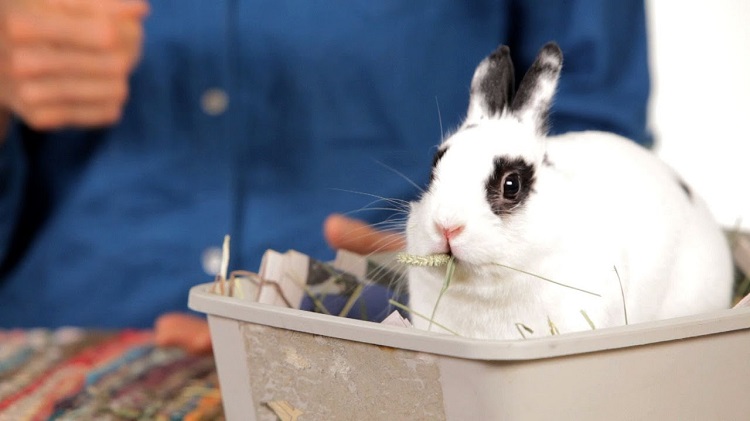
“Rabbits have a high percentage of DNA that is shared with human beings” would be incorrect. That’s just not the case.
Primates, which include apes, gorillas, and chimpanzees, are widely known to be the closest animal to humans, with our DNA being almost 99% identical. Fortunately, most of those animals are now protected by law against being tested on.
Facts about Rabbit Testing
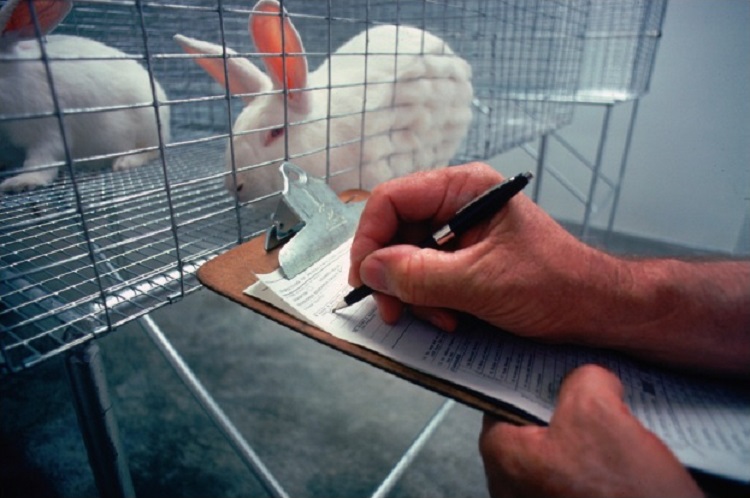
- In 2012, over 35%, or 77,206 individual rabbits, were subjected to pain and suffered needlessly while being tested.
- In 2019, 142,472 rabbits were used by United States Department of Agriculture licensees (labs).
- In 2019, 37% of the rabbits used in research suffered from pain and distress.
- Wild male rabbits have a home range of anywhere from 1-8 acres, and females tend to live in a somewhat smaller area.
- Rabbits used in research are placed in cages where they can do little more than turn around until they are eventually killed to be dissected and studied – Requirements per animal are 1 ½ sq ft – 5 sq ft with a cage height of at least 16 inches.
- Symptoms of stress in lab rabbits include nausea, vomiting, self-mutilation, physical deterioration, aggression, tremoring, and more.
- Laboratory rabbits are regularly purchased from commercial vendors and cost $89-$292, which is largely dependent on weight.
Lab Rabbits
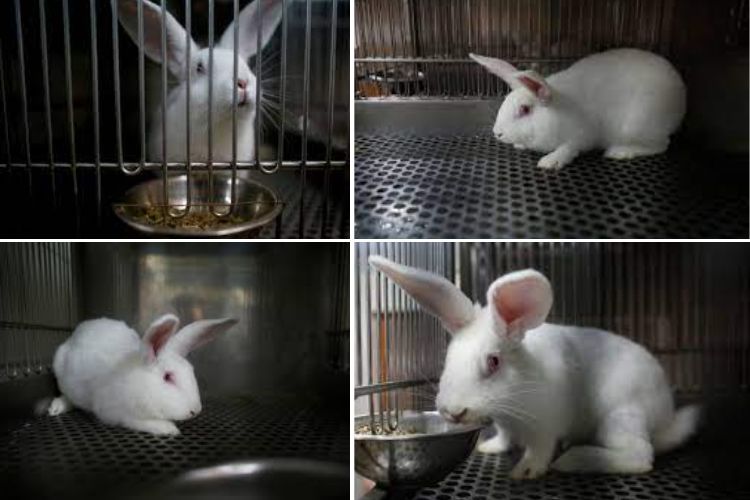
What types of rabbits are in used laboratories? Common laboratory rabbits are derived from the European rabbit. Although the most vital ones used for research are:
- New Zealand White (albino)
- New Zealand Red
- Dutch-belted
- Californian White
- Polish.
As many as 30 rabbit breeds (including mutant strains) have been identified by ARBA (American Rabbit Breeders Association) and are used for commercial and experimental uses.
Life is sacred to us and to animals. So you’d think, with so many rabbits being butchered for our safety, that humans and rabbits must have plenty of similarities in our makeup, right?
In fact, that would be the first hurdle that must have been jumped before testing on rabbits, right? There are some similarities between us and bunnies, but here’s the truth:
“…our data present a striking example of the loss of a gene with important functions, suggesting that caution should be used when selecting rabbits as animal models to study human biology and disease.” – Medical Design Briefs.
Additionally, rabbits have different microstructures (material structures seen at the micro level) than humans.
It’s as if technicians said, “Well, it moves, so it must be good to experiment on.” I found the following comment in my research. The last sentence of an article that discusses the pros and cons of using rabbits as research “guinea pigs” (my words) follows:
“And, rabbits being an easily available and less aggressive animal is a promising model if the guidelines described above are followed.” – National Library of Medicine
So since they’re easy to acquire and not dangerous, make it alright for people to abuse them in laboratories? Where is our respect for life, decency, compassion, empathy, and integrity? Those should be the trump cards.
What Are Rabbits Used for in Tests?
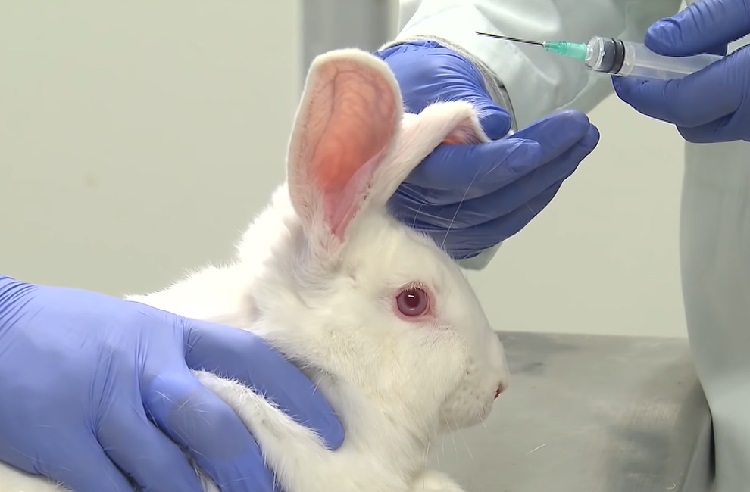
Here are the kinds of tests rabbits are used for
- Toxicity tests for cosmetics
- Toxicity tests for personal and household products
- Skin irritancy
- Pesticides
- Vaccines
- Drugs
- Cataracts
- Medical devices
- Allergies/Asthma
- Pyrogenicity (the ability of a product to induce a fever)
- Embryotoxicity (the danger that a product will harm a pregnant female or developing fetus)
- Used as models of diseases and disorders of the eyes, skin, heart, and immune system
- Used as models of cancer, cystic fibrosis, and diabetes
- Used as models of spinal cord injuries
- To produce polyclonal antibodies
- To produce and research antibodies that can be used in humans or to study human diseases. Rabbits are often genetically altered.
- Used as the first animal model to study atherosclerosis (the buildup of fats, cholesterol, and other substances in artery walls)
And so many more tests have been administered to rabbits. But the one test that may have animal rights activists and others up in arms the most is especially sadistic. It’s a procedure called…
The Draize Test
The Draize Eye and Skin tests were developed in 1944 by John H. Draize and his colleagues. Non-anesthetized rabbits are held in full body restraints while test chemicals (liquid, ointment, paste, or solid) are dripped into their eyes or spread on their skin which has been shaved and scraped.
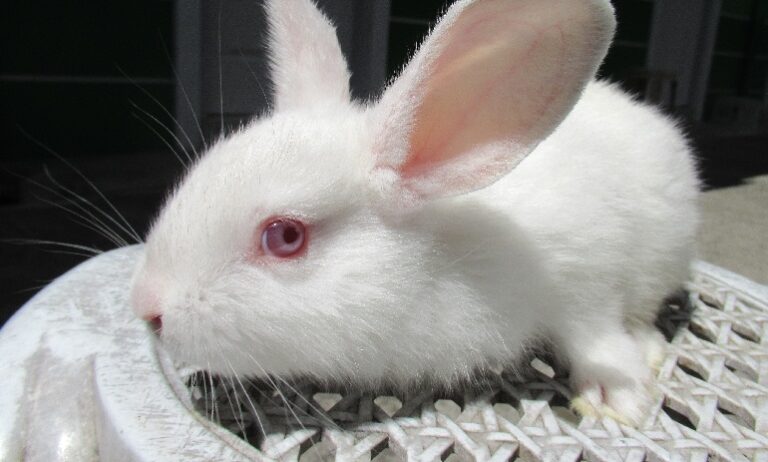
The rabbit suffers extreme pain, swelling, ulceration, eye redness, and even blindness and then is killed to be studied.
The test is used to measure irritation and corrosion caused to the eye or skin. Technicians observe and note the changes in the cornea, conjunctiva, and iris in a rabbit’s eye(s) following exposure to test substances.
It’s a difficult situation when a writer has no words, but I find it hard to think of anything powerful enough to communicate the disgust, anger, and despair I feel as I share this information.
Humane Society International uses common sense as they speak of what could be done when they say:
“…cruelty-free companies can simply avoid using new ingredients that require new test data. There are thousands of such ingredients available that have long histories of safe use and don’t require any new testing at all.”
Then there’s this from the Vice-Chair of a group of over 600 scientists, and clinicians developed in the late 80s called the Medical Research Modernization Committee:
“The Draize test is scientifically unsound and inapplicable to clinical situations. Reliance on this test is, in fact, dangerous because the animal data cannot be reliably extrapolated to man. Substances “proven” safe in lab animals may, in fact, be dangerous to people.” – Stephen R. Kaufman, M.D.
The government, animal rights groups against animal tests, and the scientific community have been at odds over this topic for decades. As of the date of this article, this rabbit test remains in use, albeit not as frequently as it has been in previous years. It’s difficult to find any exact data on how much it’s being used.
Why Are Rabbits Exploited for Research Purposes?
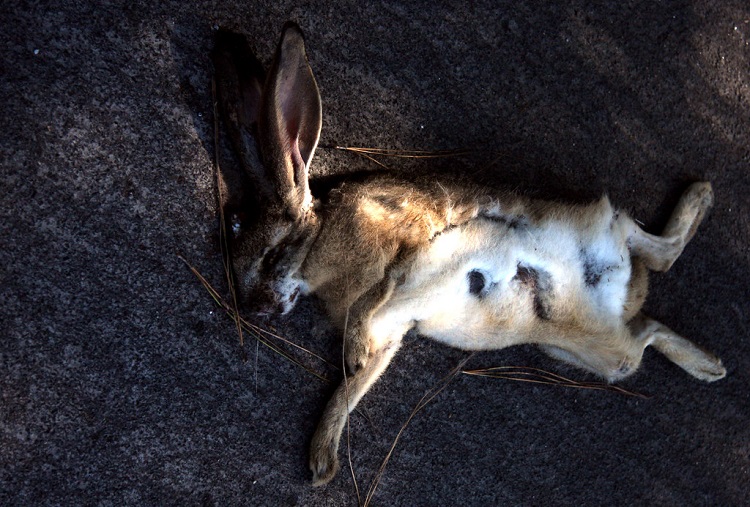
Here are some reasons why rabbits are the most commonly used animals for testing:
- Easy to handle and control
- Easy to breed. They average 3-4 litters of 4-7 kits per year.
- Even-tempered, docile animals
- Quiet animals
- Relatively inexpensive to maintain
- “It comes under the small animal category, hence comes under the purview of local ethical committee. Larger animals require an additional clearance from the central ethical committee clearance which is a time-consuming process with stringent rules.” – (National Library of Medicine)
Where is the correlation between a human’s and a rabbit’s bodies? Where is the scientific proof that what rabbits experience is what humans will? The reasons listed above would be ludicrous and laughable if the topic wasn’t so tragic and should be an embarrassment to society as advanced as America.
Rabbits Used for Cosmetics Animal Testing
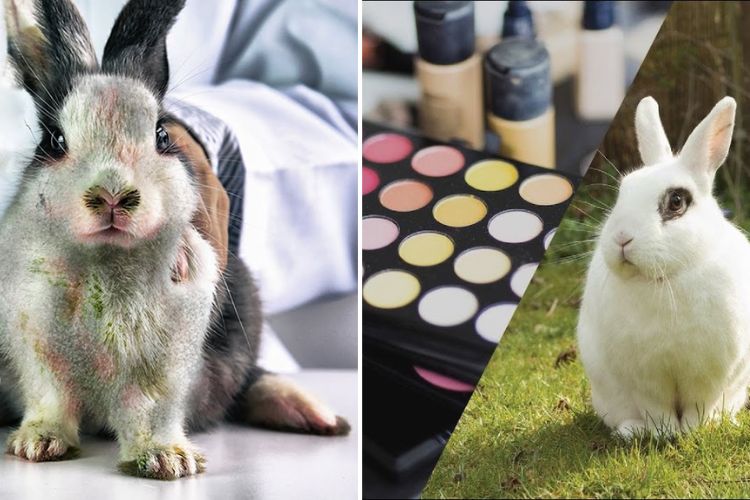
Please answer the following questions:
- Would you do anything for lipstick?
2. Would you abuse an animal/rabbit in order to have it?
3. Would you financially support a company that paid people to abuse an animal/rabbit so they could sell it?
4. Would you stop wearing it if you knew the company that made it tests on animals/rabbits?
These are questions you and your conscience need to think about. Or maybe you don’t. Wherever you stand on the issue, here are a few examples of cosmetics tests taken directly from a pharmaceutical organization:
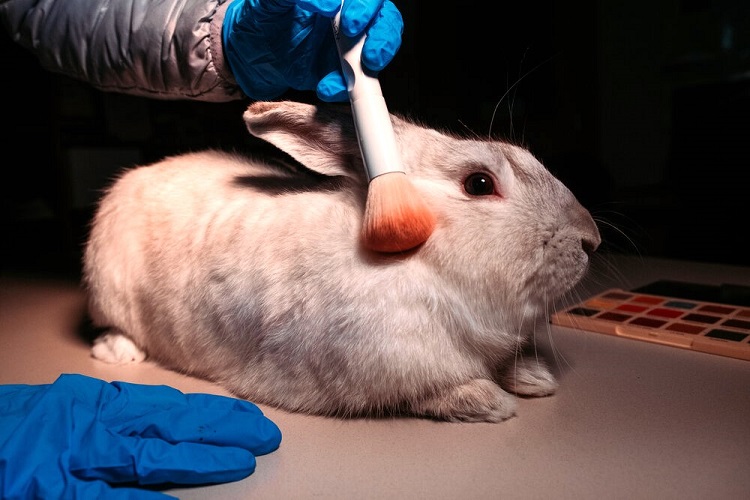
- Microbiological testing – Manufacturers check the formulation preservative system to ensure it’s free from the growth of harmful microorganisms.
- Safety and toxicological testing – Check for the possibility of skin irritation, corrosion, penetration, and sensitization.
- Stability testing – To ensure the product maintains its function during its shelf life and consumer use.
- Compatibility testing with packaging – Checks to see if there are any corrosive effects between product formulation and packaging.
How Are the Rabbits Taken Care of in Laboratories?
There are certain regulations and policies regarding the humane care of animals/rabbits in laboratories. However, there’s an elephant in the room.
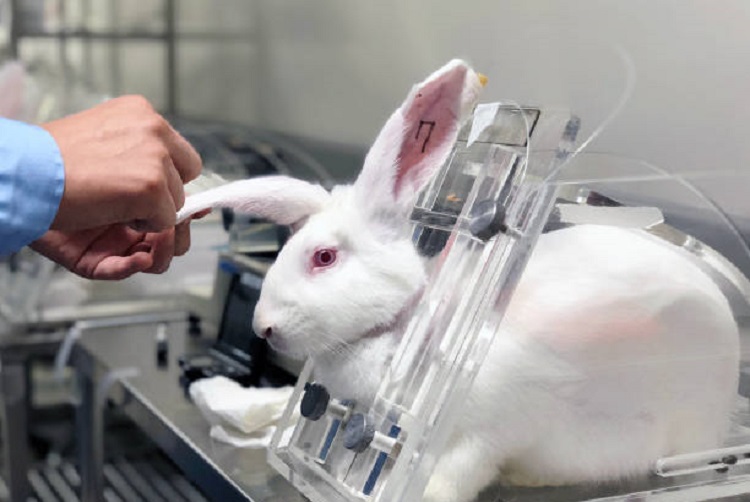
No matter what guidelines are in place regarding their care, they’re denied the one thing that’s most important – To be able to act like an animal. Many are raised in captivity and never see the light of day.
“They are denied the ability to express many of their natural behaviors.” – Humane Society International.
Humane care – The AWA (Animal Welfare Act) was signed into law in 1966. As the only Federal law in the US that protects animals undergoing research/testing, it can be defined differently, depending on the individual’s understanding of it.
Does “humane treatment of animals” include not harming them while they’re being experimented on? The AWA protects animals during transportation and their housing conditions, but no specific instruction covers the actual experiments. So you can see the reason why this particular law is easily broken.
Rabbits and their living areas are generally kept in a clean laboratory environment due to stringent policies. Additionally, as you’ve read, there are parameters regarding the space they’re given, which again can be open to interpretation by technicians.
Scientists are instructed not to get emotionally attached to the animals, for obvious reasons, which is arguably the most callous behavior of those in charge. At a creature’s most vulnerable moments and often while they’re in excruciating pain and suffering, there is no one there to give them comfort.
How Are Animals Trained in Laboratories?
All laboratory rabbits are handled by everyone involved in testing from the time they’re born, so they become accustomed to the human touch. They are frequently moved from cage to cage to clean their areas and for other purposes.
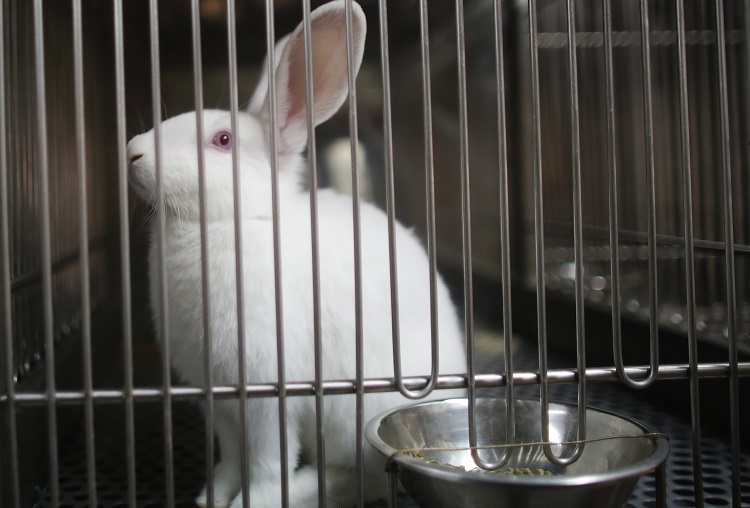
They’re trained to be agreeable to injections and blood tests by using positive reinforcement… Or so says the Understanding Animal Research website.
They go on to say no animal should be trained with negative reinforcement. To that, I say, why do you care? You perform cruel experiments that harm them while trying to look good to the public. We don’t buy it.
How You Can Help
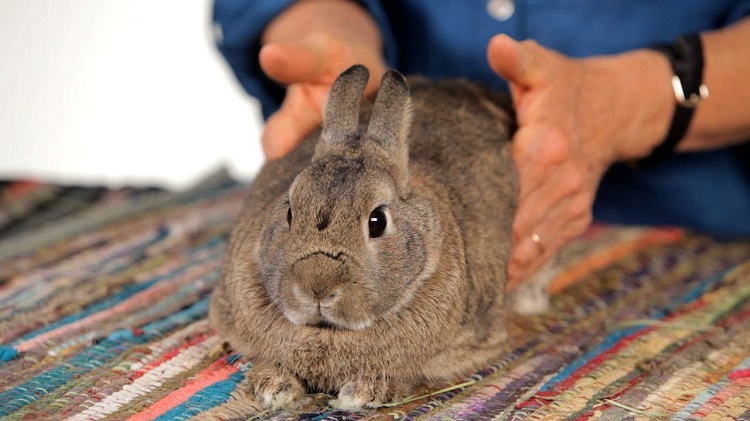
- Use your voice. Speak up. Email, call, or visit your Congressman or woman to let them know the issue of animal/rabbit testing is important to you and ask what he or she can do about it.
- Look for the Leaping Bunny on products that identify them as being cruelty-free – NOT tested on animals. There are always companies being added to the list just because consumers have spoken up and closed their wallets if an animal was involved in testing.
- Write to the Food and Drug Administration to diplomatically let them know the Draize test is unacceptable and to stop using it immediately.
- Contact the Personal Care Products Council to describe the reasons why you oppose animal/rabbit testing, including the Draize eye test, and why they should find alternative cruelty-free ways to test their products.
- Write to cosmetics and other companies that test on animals to urge them to seek alternative non-animal methods.
Cruelty-free products are available in every big-box store and even convenience stores where we shop. Doing the right thing couldn’t be easier.
In Conclusion
We hope you’ve read something in this article you didn’t know… That you will use these facts to become the voice for rabbits and other animals abused during animal testing.
There are alternatives that have been discovered to replace these archaic practices while protecting the public. Animals deserve the lives they were born to live – Not the lives we’ve forced on them.
And you are enough to make change happen.


